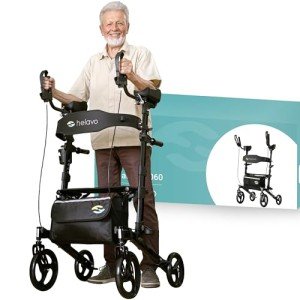The Reliable Walker: Choosing the Right Mobility Aid for Your Needs
In an ever-evolving world where mobility obstacles can emerge for different reasons, a reliable walker can considerably boost a person's quality of life. People looking for self-reliance in their motion find that a walker, often described as a walking aid, plays an important role in their day-to-day activities, whether they are recuperating from surgical treatment, handling persistent pain, or experiencing age-related mobility concerns.
In this blog site post, we will go over the importance of a reliable walker, the various types available, how to pick the very best one for your needs, and some often asked concerns.
Comprehending Walkers
Walkers are mobility gadgets that aid individuals with walking troubles. They provide stability and support, assisting to prevent falls and enhancing self-confidence when getting around.
Types of Walkers
There are numerous types of walkers available, and comprehending the differences can help you make an informed choice. Below is a table summarizing the primary types of walkers.
| Kind of Walker | Description | Benefits | Disadvantages |
|---|---|---|---|
| Standard Walker | A standard walker without wheels, needing users to raise it to move. | Provides maximum stability; simple design. | Can be troublesome; less maneuverable. |
| Two-Wheeled Walker | Equipped with 2 wheels at the front for simpler motion. | Much easier to move; more lightweight. | Less stable than a basic walker. |
| Four-Wheeled Walker | A wheeled walker with four wheels, often with a seat and hand brakes. | Extremely maneuverable; suitable for outdoor usage; stability with seating. | Needs some upper body strength to run the brakes. |
| Rollator | A four-wheeled walker with a seat and storage area. | Perfect for longer ranges; comfortable seating option. | Less stability than standard walkers; can be more costly. |
| Hemi Walker | Developed for those who can use just one hand or lower limb. | Useful for one-handed support; lightweight. | May not offer as much support as standard options. |
Key Factors to Consider When Choosing a Walker
Picking the right walker is essential for safety and self-reliance. Here are some essential aspects to think about:
1. User's Physical Condition
- Assess the user's balance, strength, and range of motion. Some users might require more support and stability, while others might prefer something lighter and more mobile.
2. Planned Use
- Consider where the walker will mainly be used-- inside, outdoors, or both. Walkers designed for outdoor use generally include larger wheels.
3. Weight Capacity
- Make sure that the walker can support the user's weight. Most walkers come with weight capability requirements, generally ranging from 250 to 500 pounds.
4. Adjustability
- Search for a walker that can be adjusted in height to ensure appropriate posture and comfort while walking.
5. Extra Features
- Many walkers included features such as brakes, seats, baskets, and even built-in lights. Examine which features are needed for the user's needs.
6. Looks
- While performance is crucial, many modern walkers are developed with aesthetics in mind. Select one that the user feels great about using.
The Benefits of a Reliable Walker
Using a reliable walker has several benefits, including:
- Increased Independence: Users can move around on their own without relying greatly on others for support.
- Boosted Confidence: A stable walker gives users the security they need to move easily, decreasing the fear of falling.
- Enhanced Stability: Walkers substantially boost balance, particularly for those with mobility impairments.
- Enhanced Quality of Life: With improved mobility, users can engage more actively in social, leisure, and everyday activities.
Often Asked Questions (FAQ)
1. How do I understand if I require a walker?
If you discover walking to be tough, experience regular falls, have actually just recently had surgery, or have chronic conditions affecting your mobility, it may be time to consider a walker.
2. Can I utilize a walker on outdoor surfaces?
Yes, however think about getting a four-wheeled walker or a rollator designed particularly for outdoor terrains, as they typically have bigger wheels for better maneuverability.
3. How can similar web site adjust my walker for the very best fit?
Most walkers have height-adjustable legs. Stand in your shoes, and with your arms relaxed at your sides, the top of the walker must be at wrist level.
4. How do I preserve my walker?
Regularly inspect the walker for any loose screws or parts, guarantee the wheels are moving smoothly, and clean it occasionally to keep its condition.
5. How can I construct my confidence while utilizing a walker?
Start using the walker in familiar and safe environments. Gradually increase the complexity of your environments as you end up being more comfortable.
In conclusion, a reliable walker is not simply a mobility aid; it's a method to higher self-reliance, safety, and enhanced quality of life. Comprehending the types of walkers readily available and examining personal needs can help individuals make informed choices. Whether it's a basic walker or a modern rollator, the ideal equipment promotes independence and self-confidence in mobility.
If you or a loved one deals with mobility difficulties, think about investing in a walker that fulfills personal needs, enhances mobility, and eventually, improves everyday living. With the right option, users can take back control of their movement, fostering a more active and fulfilling life.

